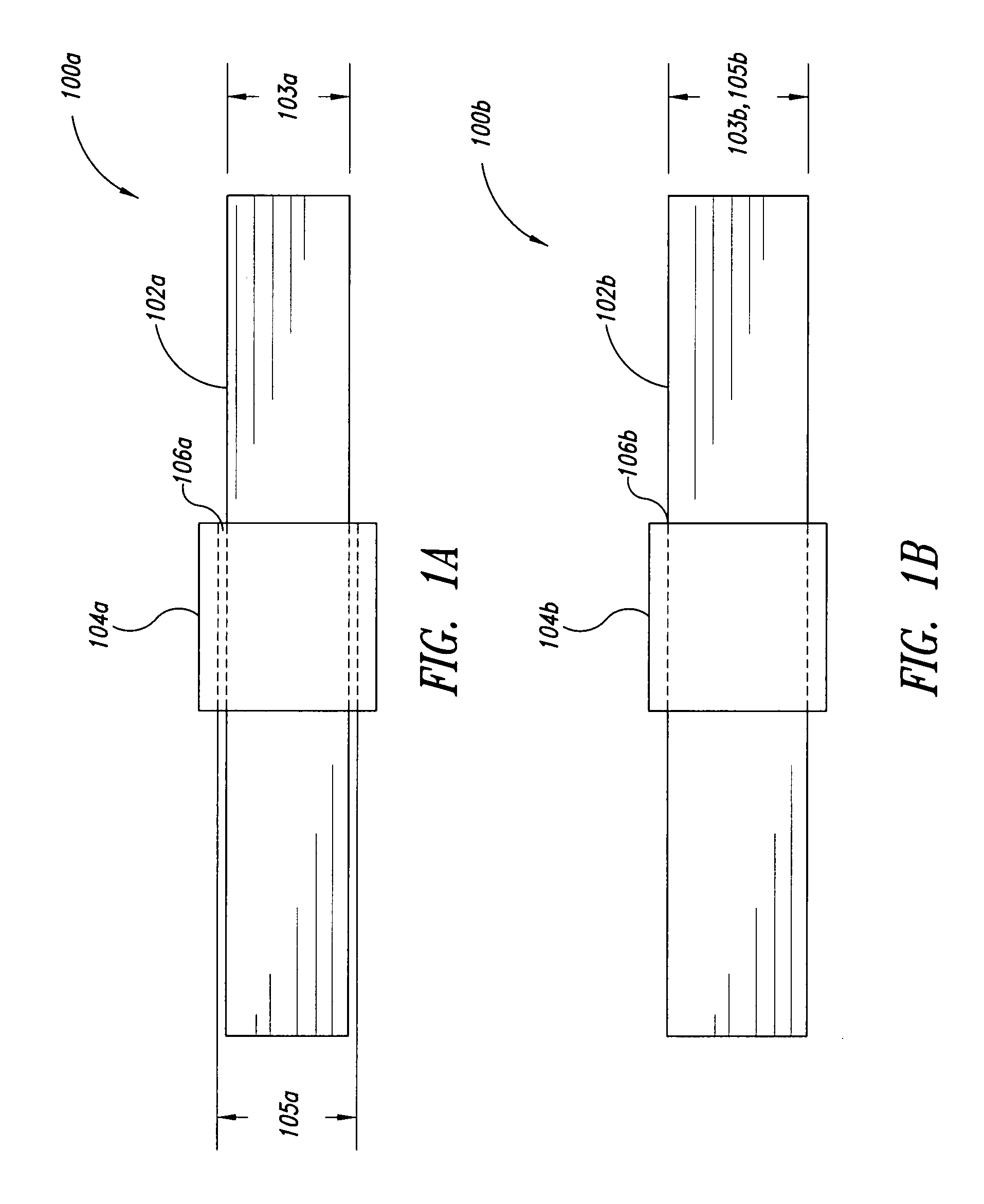Elongated member/radially expandable member assembly and methods of assembling the same
a technology of radial expansion and elongation member, which is applied in the direction of mechanical equipment, manufacturing tools, couplings, etc., can solve the problems of difficult for the installer to properly and/or accurately index and/or and the union between the components is less than satisfactory, and the elongated member is difficult to properly and/or accurately orient the elongated member
- Summary
- Abstract
- Description
- Claims
- Application Information
AI Technical Summary
Benefits of technology
Problems solved by technology
Method used
Image
Examples
Embodiment Construction
[0043] In the following description, certain specific details are set forth in order to provide a thorough understanding of various embodiments of the invention. However, one skilled in the art will understand that the invention may be practiced without these details. In other instances, well-known structures and methods associated with cold working and / or passing a mandrel through a component to produce some amount of radial expansion of the component may not be shown or described in detail to avoid unnecessarily obscuring descriptions of the embodiments of the invention. It is appreciated and understood that the process of cold working and / or radial expansion may or may not result in the creation of improved fatigue life, which may provide improved characteristics for resisting crack formation, initiation, and / or propagation during operational, thermal, and / or other loading scenarios.
[0044] In the following description and for purposes of brevity, reference shall be made to the p...
PUM
| Property | Measurement | Unit |
|---|---|---|
| axial length | aaaaa | aaaaa |
| length | aaaaa | aaaaa |
| inner perimeter | aaaaa | aaaaa |
Abstract
Description
Claims
Application Information
 Login to View More
Login to View More - R&D
- Intellectual Property
- Life Sciences
- Materials
- Tech Scout
- Unparalleled Data Quality
- Higher Quality Content
- 60% Fewer Hallucinations
Browse by: Latest US Patents, China's latest patents, Technical Efficacy Thesaurus, Application Domain, Technology Topic, Popular Technical Reports.
© 2025 PatSnap. All rights reserved.Legal|Privacy policy|Modern Slavery Act Transparency Statement|Sitemap|About US| Contact US: help@patsnap.com



